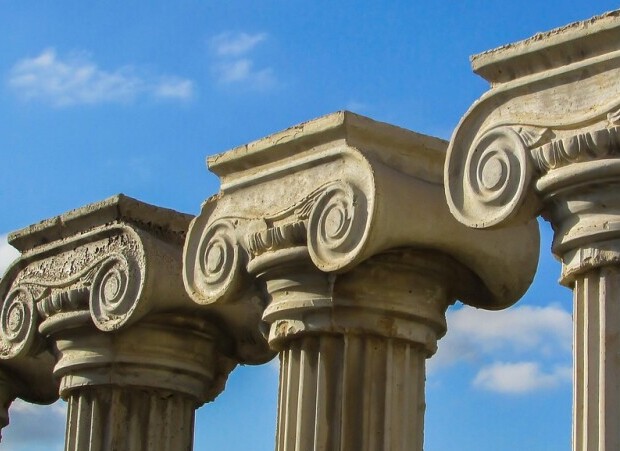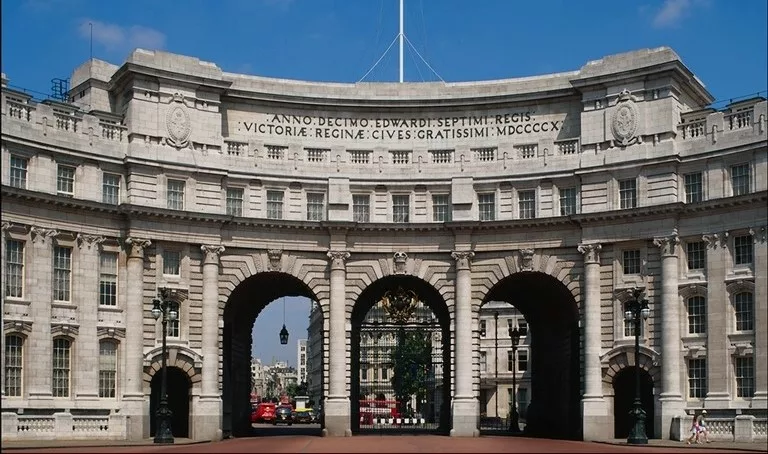The Evolution and Stunning Variations of Decorative Columns
Columns have played an integral role in architecture for thousands of years, evolving across cultures, styles, and materials. These architectural elements are not just structural supports; they also convey artistic expression and cultural identity.

The Origins and Development of Classical Orders
The architectural orders—Doric, Ionic, and Corinthian—originated in ancient Greece and were refined over time. These styles evolved due to cultural, political, and artistic influences. The Doric order, initially simple and robust, became more refined and ornate in later periods. The Ionic order, known for its scroll-like volutes, exhibited regional variations across the Greek world.
When the Romans adopted Greek architectural principles, they modified and expanded upon them. Roman innovations included the Composite order, which combined elements of the Ionic and Corinthian styles. Additionally, the Romans perfected concrete construction, enabling the creation of larger, more versatile structures with grand columns that exceeded their Greek predecessors in scale and complexity.
Beyond Europe, decorative columns have flourished in various cultural contexts. In India, intricately carved stone columns adorn temples, showcasing exceptional craftsmanship. In China and Japan, wooden columns feature elaborate joinery techniques, reflecting an architectural philosophy deeply connected to nature and harmony. Islamic architecture, particularly in regions like Persia and the Middle East, integrates slender columns with intricate geometric and floral patterns.
The Enduring Appeal of Decorative Columns
Though modern architecture often prioritizes materials like steel and glass, the aesthetic appeal of columns remains significant. Today’s designs incorporate both traditional and contemporary interpretations, blending historical influences with cutting-edge technology. Decorative columns may no longer be structurally necessary in many cases, but they continue to add grandeur, balance, and visual interest to buildings.
Iconic Structures with Exquisite Columns
Throughout history, some of the world’s most iconic buildings have showcased the power of decorative columns. These structures exemplify how columns serve both functional and artistic purposes.
The Parthenon (Athens, Greece)
The Parthenon, dedicated to Athena, features majestic Doric columns that exemplify balance, strength, and proportion. Their fluted shafts and austere capitals create a timeless and harmonious effect.
The Pantheon (Rome, Italy)
The Pantheon’s grand entrance is framed by massive Corinthian columns, which contribute to the temple’s sense of awe and reverence. These intricately detailed columns support the iconic portico, leading to one of the most remarkable domed interiors in history.
The United States Capitol (Washington, D.C.)
The U.S. Capitol blends multiple classical styles, using both Doric and Corinthian decorative columns to reinforce its symbolic authority. These columns lend an air of sophistication and strength, embodying democratic ideals.
The Sultan Ahmed Mosque (Istanbul, Turkey)
Also known as the Blue Mosque, this architectural masterpiece features round, slender columns supporting its vast domes. The combination of Ottoman and Byzantine influences highlights how columns can adapt across styles and cultures.
Incorporating Columns into Modern Design
When considering columns for contemporary projects, studying these historic structures can provide valuable insights. Whether for residential, commercial, or public architecture, columns remain a fundamental element in enhancing visual appeal and storytelling.
Exploring Materials for Decorative Columns
Selecting the right material for decorative columns is crucial for achieving durability, aesthetics, and functionality. Each material offers distinct advantages depending on the architectural context.
Traditional Materials
Marble: Luxurious and timeless, with natural veining that enhances sophistication.
Granite: Highly durable and ideal for exterior applications due to its weather resistance.
Wood: Warm and natural, offering flexibility for painted or stained finishes.
Modern Materials
Cast Stone and Plaster: Cost-effective alternatives that mimic natural stone while allowing intricate detailing.
Glass Reinforced Cast Stone (GRC): Lightweight yet durable, particularly useful in seismic zones.
Fiberglass: Versatile, weather-resistant, and suitable for both indoor and outdoor use.
Polystyrene with Stucco or Hard Coat: Lightweight and customizable, perfect for faux finishes.
When choosing materials, consider factors such as climate, budget, and maintenance requirements to ensure longevity and visual harmony within your architectural design.
Shapes and Styles: Enhancing Architectural Appeal
Decorative columns come in a variety of shapes and styles, each contributing to a building’s character.
Common Column Shapes
Round Columns: Classic and elegant, widely used in traditional and neoclassical architecture.
Square Columns: Modern and bold, often featured in contemporary and minimalist designs.
Oval & Barrel-Shaped Columns: Unique and dynamic, ideal for avant-garde aesthetics.
Structural Variations
Straight Columns: Convey stability and formality, often used in institutional buildings.
Tapered Columns: Create a sense of height and grandeur, frequently seen in classical and colonial styles.
By carefully selecting the appropriate shape and style, architects can enhance the overall aesthetic and functionality of a structure.
Demystifying Pilasters and Their Architectural Significance
Pilasters are decorative, shallow projections that resemble columns but are attached to a wall. They add depth and texture without requiring the space of freestanding columns. Pilasters can frame doorways, windows, and grand entrances, providing a sense of sophistication and proportion.
Understanding Configurations and Sizes of Columns
The configuration and size of columns influence their visual and structural impact. Standard configurations range from 1/4 to 3/4 on plan, affecting how much they protrude from their base. The right size ensures balance—too large, and they overwhelm a space; too small, and they lack presence. Architects must consider proportion, human scale, and surrounding design elements when determining column dimensions.

Diverse Types of Capitals and Bases
The capital and base define a column’s character, with different styles offering unique visual effects:
Doric Capitals: Simple and sturdy, perfect for formal structures.
Ionic Capitals: Elegant and decorative, featuring scroll motifs.
Corinthian Capitals: Ornate and detailed, ideal for grand, luxurious settings.
Tuscan Capitals: Minimalist and practical, suited for understated designs.
Composite Capitals: Combining Ionic and Corinthian elements for versatile applications.
The base stabilizes the column, complementing the capital’s style for a cohesive look.
Faux Finishes for Decorative Columns
Faux finishes provide a cost-effective way to enhance the appearance of decorative columns:
Marbleizing: Mimics high-end marble for a luxurious effect.
Trompe l’oeil: Creates realistic depth and texture.
Stucco & Plaster Texturing: Adds dimension and rustic charm.
The choice of finish should align with the architectural style and intended atmosphere of the space.
Pros and Cons of Different Materials
Each material has its benefits and limitations:
Marble: Stunning but expensive and high-maintenance.
Granite: Durable but heavy and costly.
Fiberglass: Lightweight and weather-resistant but less authentic-looking.
Cast Stone: Aesthetic versatility with moderate durability.
Polystyrene: Affordable but less durable for high-traffic areas.
Balancing aesthetic appeal, longevity, and budget considerations is key when selecting the ideal material.
Conclusion
Decorative columns continue to shape architecture across time and cultures. Whether used for structural integrity or purely aesthetic purposes, their influence is undeniable. By understanding historical context, material options, and stylistic choices, architects and designers can seamlessly integrate columns into modern spaces, ensuring their timeless beauty and functional value endure for generations to come.
Contact Us
We hope you found this information on decorative columns helpful! If you have any questions or need assistance, feel free to reach out. Please note that due to government regulations, you’ll need to sign in and confirm your message. We apologize for any inconvenience.
Author: Rob
Ps. This is the company that taught me how to build this site and 3 others in 6 months, they keep their promises.



Decorative columns have always fascinated me, especially how they blend form and function across different architectural styles. I’ve worked on restoration projects where choosing the right column material and style was crucial to maintaining historical integrity while ensuring durability. It’s amazing how even in modern design, columns can elevate a space’s aesthetic. I appreciate how this article breaks down their evolution and material choices—great insights for anyone interested in architecture!
Hi Zac,
Thanks for your comments, its amazing to see how these type of items evolve.
Robby